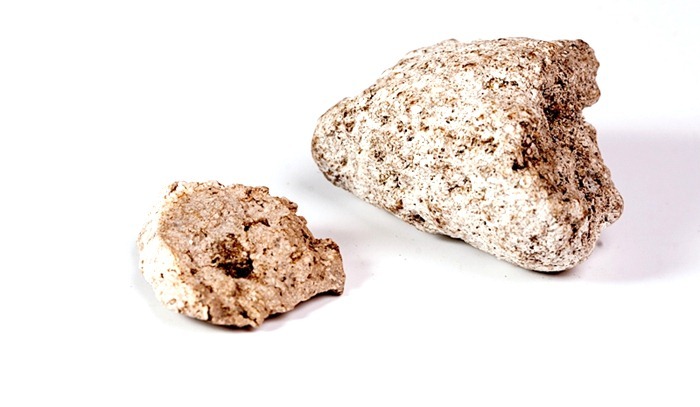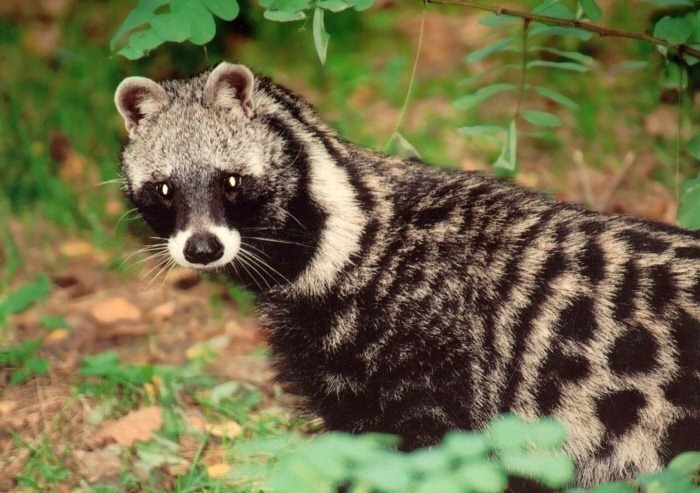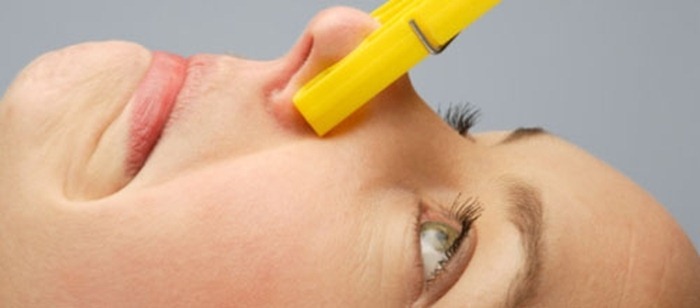Since ancient times, fragrances have been used to disguise the natural smell of the human body in hunting, please the gods, or simply hide the unpleasant odor of sweat.
The earliest spirits were made up of natural ingredients. Towards the end of the 19th century, the development of modern perfumery began. Natural components still played an important role in it, but chemical substances began to mix with them.
However, many of the "fragrant" chemicals( as well as a large number of natural) are unusual and even disgusting. Here are top-7 strange ingredients for spirits .It's unlikely that you would want to touch them with your hand.
Content:
- 7. Deer musk
- 6. Beaver jet
- 5. Ethane sulphide
- 4. Oil of costa
- 3. Ambergris
- 2. Muscus civete( cibetin)
- 1. Scatol
7. Deer musk
 In deer musk deer musk deerbelly has a special bag used for spraying musk. He attracts females. Perfums have long valued this substance, as it enhances the persistence of perfume composition.
In deer musk deer musk deerbelly has a special bag used for spraying musk. He attracts females. Perfums have long valued this substance, as it enhances the persistence of perfume composition.
Unfortunately for deer, a bag of fresh musk is easier to get when the animal is dead. This ingredient was so highly valued that it was used in all spirits up to the 1970s. Currently, the musk deer are limited, but on farms in different countries deer are grown, in which musk is produced by inserting a catheter into a musk bag. True, the animal does not kill, it sleeps under the influence of sleeping pills.
6. Beaver jet
 Secretion from prianal preputial glands of beavers. Beaver uses this substance to mark the territory. The smell of the jet has a pleasant resemblance to the smell of wood and leather, for this purpose it is used in perfumery.
Secretion from prianal preputial glands of beavers. Beaver uses this substance to mark the territory. The smell of the jet has a pleasant resemblance to the smell of wood and leather, for this purpose it is used in perfumery.
And still the beaver jet is still used as a natural food additive to improve the taste of strawberries and raspberries.
5. Ethane sulphide
 One of the most powerful chemicals in perfumery. It has a penetrating, repellent smell of sulfur and onions. It is not surprising that such an aroma is found in nature in onions, asparagus and durian fruit. It's amazing that there are also geraniums in the rose.
One of the most powerful chemicals in perfumery. It has a penetrating, repellent smell of sulfur and onions. It is not surprising that such an aroma is found in nature in onions, asparagus and durian fruit. It's amazing that there are also geraniums in the rose.
Ethane sulphide is used in perfumery to enrich geranium oil to give a more natural base odor to the rose and to reproduce the smell of the sea, as it is one of the chemicals present in the air on beaches.
4. Oil of Costus
 It was a very common ingredient in classical perfumery and was found in popular male perfumes such as Aramis and Patou Pour Homme. Do you want to imagine the smell of the oil of the costume outside the perfume? Smell the wet dog hair. The real magic of this oil is manifested in combination with other ingredients of animal origin, such as a beaver sprout or civet musk.
It was a very common ingredient in classical perfumery and was found in popular male perfumes such as Aramis and Patou Pour Homme. Do you want to imagine the smell of the oil of the costume outside the perfume? Smell the wet dog hair. The real magic of this oil is manifested in combination with other ingredients of animal origin, such as a beaver sprout or civet musk.
3. Amber
 The wax-like intestinal secretion of male sperm whales. Scientists are not entirely sure whether amber is the result of the pathology or normal life activity of these magnificent marine mammals, but it is precisely known that it is very stink.
The wax-like intestinal secretion of male sperm whales. Scientists are not entirely sure whether amber is the result of the pathology or normal life activity of these magnificent marine mammals, but it is precisely known that it is very stink.
After a long exposure, most of the repulsive smell of amber is volatilized. In perfumery, this ingredient is used as a fixer. Even the smallest drop will suffice, that spirits some days were felt on your skin.
2. Muscu civete( cibetin)
 Represents a dense secretion from the glands of a wiverra, a mammal living in Africa and India. The musk of the Ethiopian civet is best. The powerful and unique aroma of cibetin will remind you of rotten foods. But in a very dilute form, it becomes very attractive, with a floral tinge.
Represents a dense secretion from the glands of a wiverra, a mammal living in Africa and India. The musk of the Ethiopian civet is best. The powerful and unique aroma of cibetin will remind you of rotten foods. But in a very dilute form, it becomes very attractive, with a floral tinge.
In the past, musk civet was often forged. The main fillers of the fake product were honey and baby feces. Can you imagine how awful the real musk smells?
1. Scatole
 There can be no two opinions: the scatol stinks. It is a compound that is contained in feces and coal tar. This quintessence of stink, for this skatole and was in the first place in the rating of the most disgusting components of the perfume. The more surprising that it is in extremely small doses can be found in jasmine and orange flowers. In combination with indole, scatol helps to give these colors a bright erogenous smell.
There can be no two opinions: the scatol stinks. It is a compound that is contained in feces and coal tar. This quintessence of stink, for this skatole and was in the first place in the rating of the most disgusting components of the perfume. The more surprising that it is in extremely small doses can be found in jasmine and orange flowers. In combination with indole, scatol helps to give these colors a bright erogenous smell.



